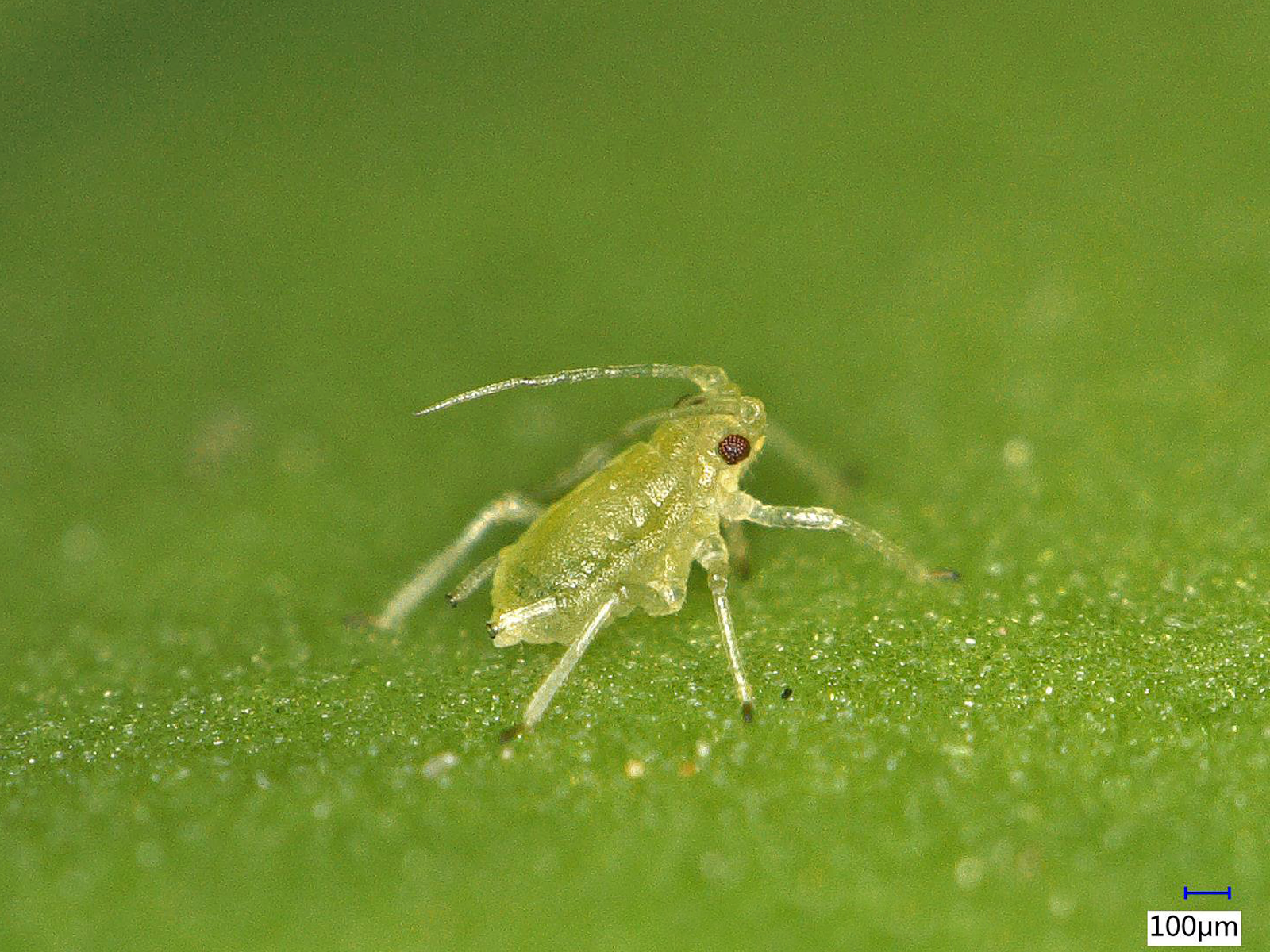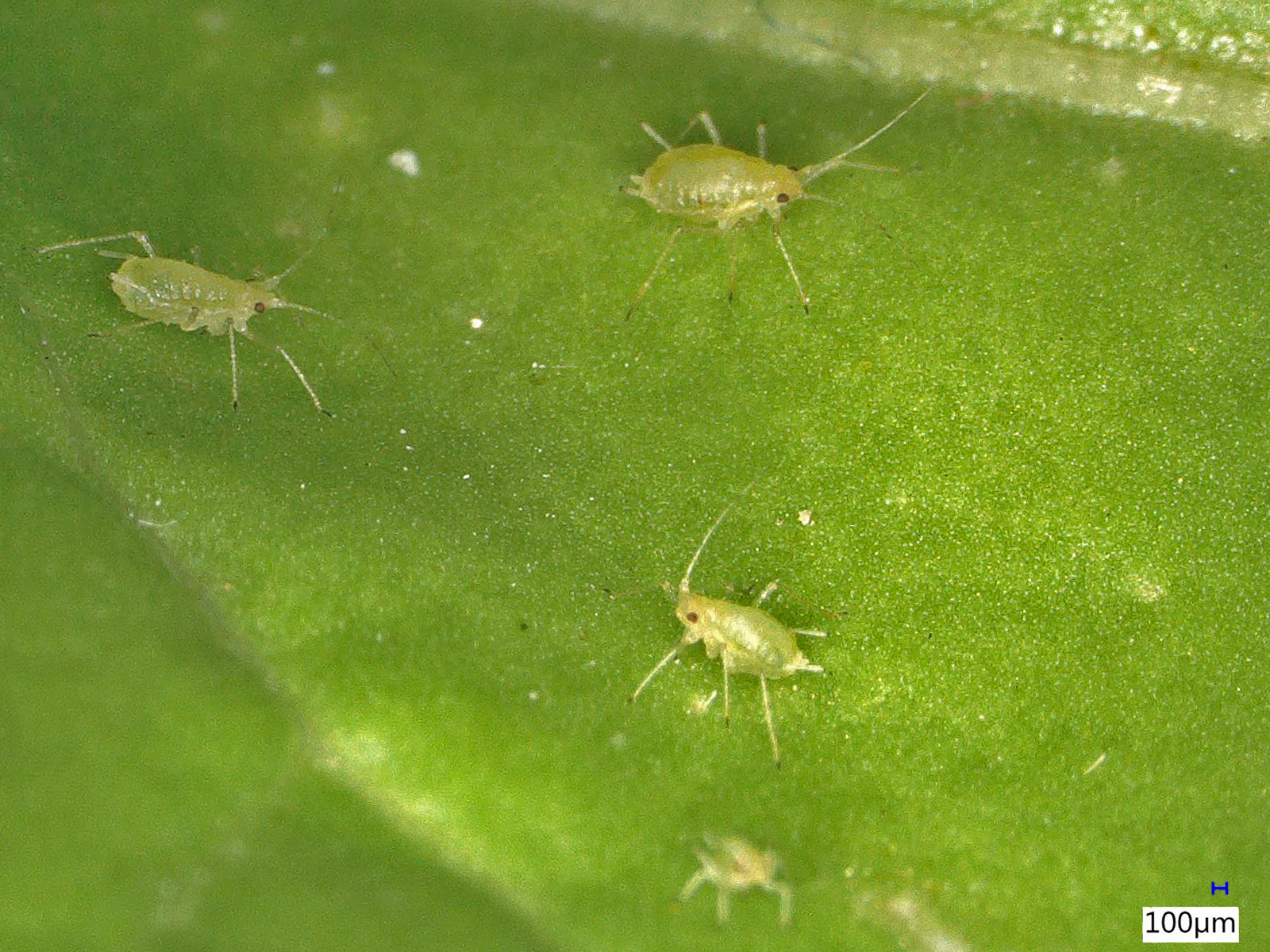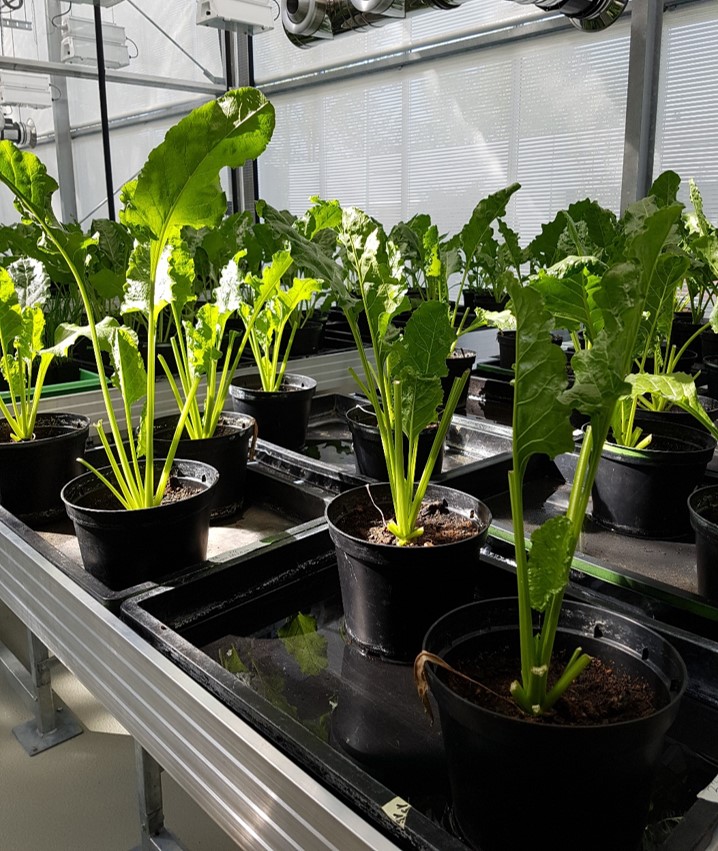The joint project ViVe_Beet, coordinated by the Julius Kühn Institute (JKI), aims to develop an RNA spray-based selective control option for virus-transmitting aphids in sugar beet. In addition to researchers from the JKI Institute of Plant Protection in Arable Crops and Grassland, the Institute of Sugar Beet Research (IfZ) and the Fraunhofer Institute for Molecular Biology and Applied Ecology (IME) are also involved in the project. The project partners are pursuing the approach of constructing a double-stranded RNA molecule specially tailored to aphids, which will be applied in a suitable formulation by means of crop protection sprays in order to protect sugar beet from yellowing viruses in the future.
The Fraunhofer IME and the IfZ are responsible for the development of the RNA molecules and the corresponding mechanisms: If the aphids ingest the molecules during the sucking process on the plant, they should switch off genes in a targeted manner and thus lead to the death of the aphids and prevent the spread of the yellowing viruses in the plant. Together with the IfZ, the JKI will then test the effectiveness of the formulation developed under laboratory and field conditions.
The molecular biology approach of the project harbours the potential to develop completely new selective plant protection products in the future. Specifically designed molecules could be effective not only against insects, but also against viruses, bacteria or fungal pathogens. In the USA, the use of RNA-based plant protection products is already being tested to combat the Colorado potato beetle.
Background:
Leaf-sucking insects not only weaken the plant through their sucking activity but, in the case of aphids, also transmit other pathogens such as yellowing viruses. To control this group of insects, the seed was treated with insecticides until 2018. The active ingredient group of neonicotinoids blocks the transmission of nerve impulses and thus controls the spread of insect pests. The advantage of dressing is that the insecticide primarily comes into contact with the insects that suck on the plant and actually damage it. This selective effect is now also to be achieved with the RNA formulation.
 Fraunhofer Institute for Molecular Biology and Applied Ecology IME
Fraunhofer Institute for Molecular Biology and Applied Ecology IME


